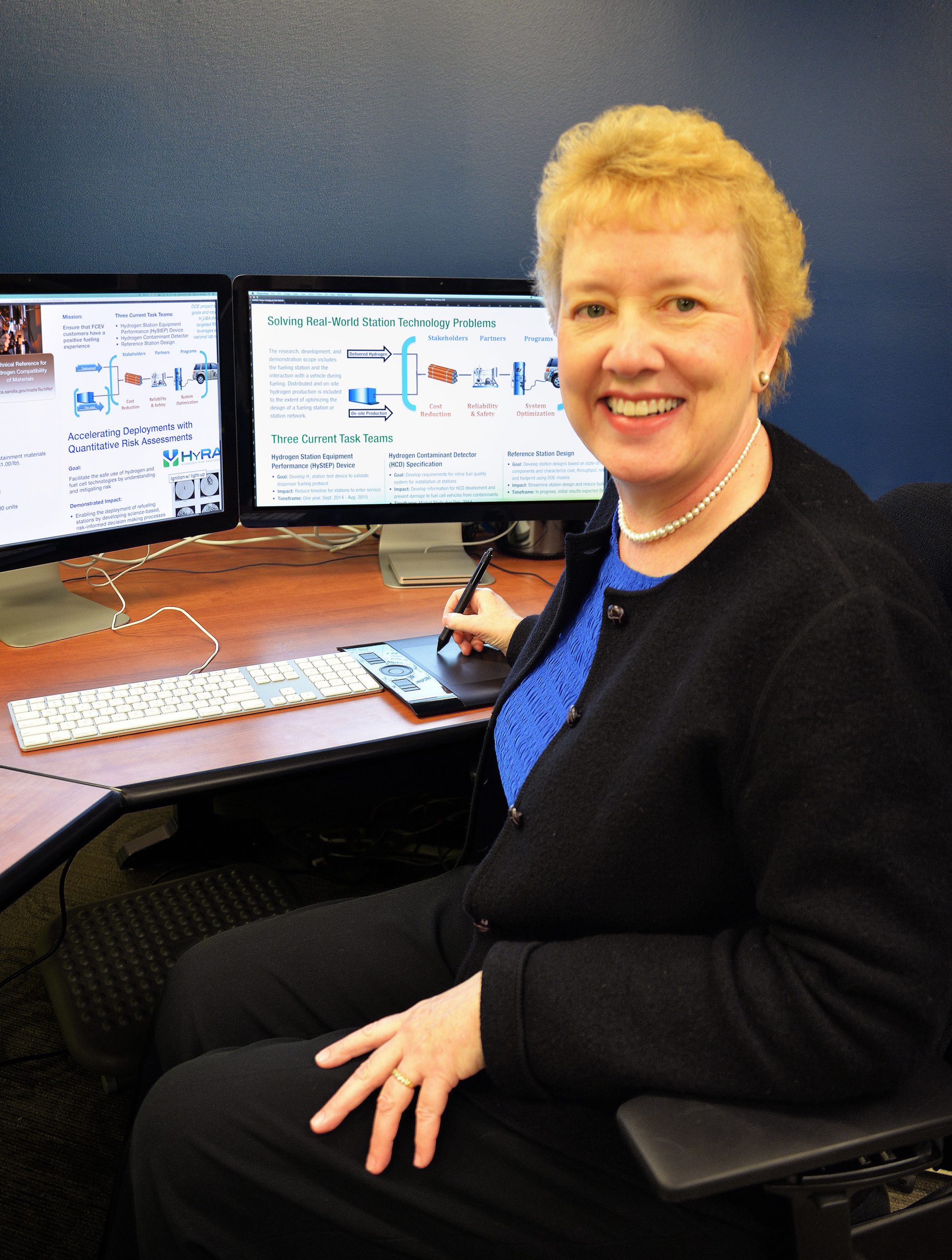ALBUQUERQUE, N.M. — Sandia National Laboratories has won four regional awards from the Federal Laboratory Consortium (FLC) for its work to develop and commercialize innovative technologies. One award honored business development specialist Bianca Thayer as Technology Transfer Professional of the Year.

Sandia technologies recognized by the FLC’s Far West/Mid-Continent regions for 2015 are:
- Dynamic Prosthetic Socket System with a Notable Technology Development Award
- Decontamination Technology for Chemical and Biological Agents with an Excellence in Technology Transfer Award
- Twistact with an Outstanding Technology Development Award
The awards will be presented Aug. 26 at the Hilton Airport/Harbor Bay Marina in San Diego, California.
“Sandia is truly honored to be recognized by our peers for our work in technology development and technology transfer,” said Jackie Kerby Moore, Sandia’s manager of Technology and Economic Development and the labs’ representative to the FLC. “Congratulations to all the researchers acknowledged for their accomplishments.”
A passion for tech transfer
Thayer started her Sandia career five years ago as a licensing executive in Albuquerque after working 30 years in industry. She has negotiated new industry and academic partnerships and transferred a wide range of Sandia technologies through licensing, cooperative research and development and other business agreements.
Among Thayer’s successes was negotiating the patent license in 2012 with Honeywell UOP for crystalline silico-titanates used to remove radioactive cesium from contaminated seawater following the Fukushima nuclear power plant disaster in Japan. She also negotiated numerous new licenses for Sandia’s decontamination technology resulting in more widespread use of the product.
Her manager, Carrie Burchard, said Thayer, who transferred to Sandia’s Livermore, California, lab in 2013, “is constantly thinking of new ways to help her licensees be successful in commercializing technologies from Sandia. She’s got a true passion for technology transfer.”
A better prosthesis

The national Amputee Coalition says nearly 2 million people in the United States live with limb loss, and about two-thirds have lost a lower limb. Diabetes is the leading cause, accounting for more than 65,000 amputations a year nationwide.
The fit of a prosthesis is a challenge for amputees because fluid in the leg shifts and muscles shrink while walking on an artificial leg. A custom-fit socket doesn’t always fit.
Mechanical engineer Jason Wheeler has been studying prosthetics at Sandia for a decade and is part of a robotics group that developed a sensor to tell how a limb changes, along with a system that automatically accommodates those changes.
Sandia’s pressure sensor fits in a liner that slips into the socket of a prosthesis. The system automatically adjusts socket shape by moving fluid into bladders inside the liners that amputees normally wear to improve a socket’s fit and comfort.
Development continues and more amputee testing is needed, but the technology “is getting mature enough to partner with companies who will commercialize it and make it available to people who need it,” Wheeler said. Sandia has applied for patents on the technology.
Battling toxic bacteria, viruses and fungi
Sandia decontamination technology neutralizes chemical and biological agents using a mix of mild, nontoxic and noncorrosive chemicals found in common household products, such as hair conditioner and toothpaste.

The product works quickly and kills 99.99999 percent of bacteria, viruses and fungi. Originally used by the military and first responders, Sandia has licensed the formula to companies that have developed it to battle toxic mold and decontaminate methamphetamine labs, disinfect healthcare facilities and schools, remove pesticides from farm equipment and agricultural packing plants and fight the spread of the Ebola virus in Africa. It also has been used as a preventive measure at presidential debates and a political convention.
Seven new licensees are manufacturing and distributing products based on the Sandia decontamination patents. Efforts continue to add more licensees and product applications.
New approach to wind energy
Sandia’s Twistact technology is designed to take wind energy to the next level. “It can eliminate the need for rare earth magnets in multi-megawatt wind turbines, which is the last major hurdle to proliferation of cost-effective wind power,” said principal investigator Jeff Koplow. “Anticipated rare earth supply disruptions are holding back large-scale investment in wind power.”
Twistact also should allow construction of very large wind turbines to achieve better economies of scale that exist at 10 megawatts and beyond, and reduce the weight of wind turbine housings and, potentially, construction costs.
“Twistact is a new approach to the very old problem of how to transmit electrical power between something that moves and something that doesn’t,” Koplow said. “Think of a moving subway train taking power off a stationary third rail.”
It is done now with a sliding contact device, a brush or shoe that rides along a surface. But sliding electrical contacts easily wear out. “Twistact connects an electrical circuit between something moving and something stationary or, in the case of a wind turbine, something rotating and something not, without a sliding contact and without electrical arcing,” Koplow said.
The technology could be important for wind turbines because it makes using copper and steel instead of rare earth magnets practical in the generators. “Twistact technology is designed to eliminate the need for high-maintenance components like gear boxes and brush contacts,” Koplow said.
The FLC is a nationwide network of more than 300 members that provides a forum to develop strategies and opportunities to link laboratory mission technologies and expertise with the marketplace. Its awards program annually recognizes federal laboratories and their industry partners for outstanding technology transfer efforts. Since being established in 1984, the FLC has presented awards to nearly 200 federal laboratories. It is considered one of the most prestigious honors in technology transfer.
Click here for more information on Sandia’s technology partnerships.